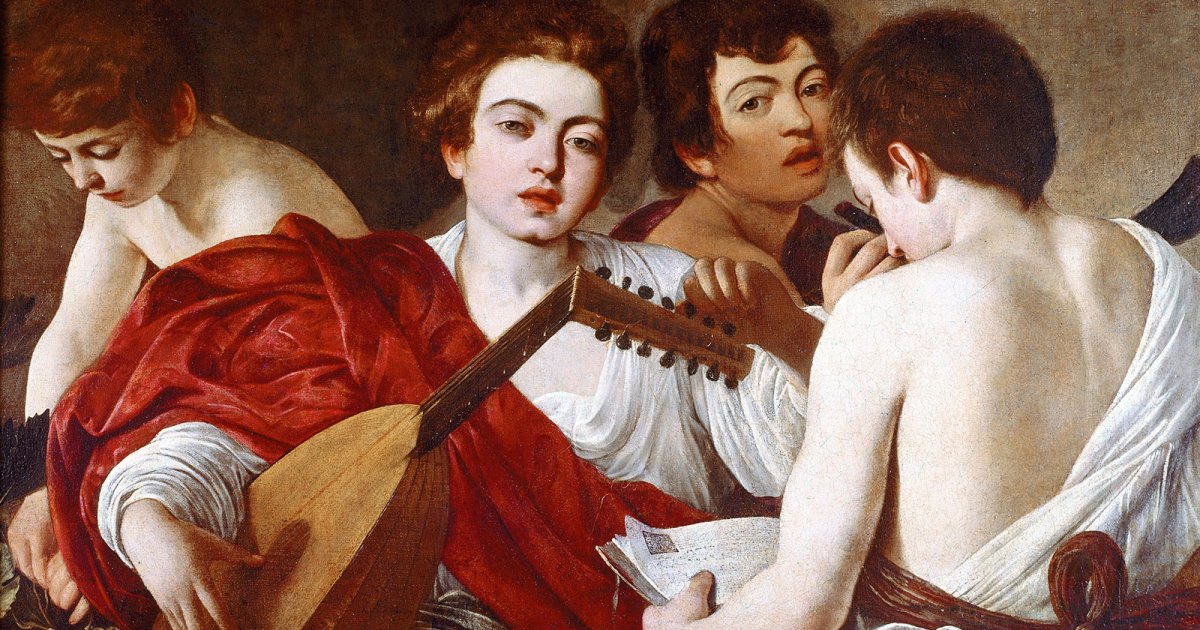METROPOLITAN MUSEUM OF ART, The Musicians By Caravaggio
 Language: English / USA
Language: English / USA
In the spectacular section dedicated to seventeenth-century painting, the Metropolitan Museum boasts three works by Caravaggio: a delicate Holy Family, a powerful version of The Lute Player, and above all, one of the artist’s most intriguing, mysterious compositions, habitually known as “The Musicians” and replete with a number of veiled allusions. Described by sources of the time as “youths playing music very well drawn from nature”, the canvas has not reached us in very good condition. The painting has been damaged by over-zealous cleaning, and the almost complete erasure of the musical score in the foreground shows that some chiaroscuro and glazing effects have been lost. Despite this, the painting maintains an ambiguous allure, and has given rise to numerous, often contrasting interpretations, ranging from a presumed declaration of homosexuality to a complex religious significance.
The painting, dating to around 1596, marked a turning point in the career of Caravaggio, who had moved to Rome a few years earlier, but was having difficulty emerging from poverty: this painting earned him repute among the elite circle of collectors and patrons of the arts.
In an apparently realistic context, with a number of youths depicted in old-style clothes, performing a little concert, it is surprising to note a winged figure (an angel? the god of Love?) on the left, gathering grapes. The traditional title of “Concert of Youths” is also peculiar: the youths are not playing the instruments, and if anything, are shown before the performance of a concert, during a preparatory, study phase.
The composition of the four figures, all young and half-naked, carefully arranged within the limited space of the canvas, is particularly complex. The foreground position of the figure in the center of the scene, very close to the observer, heightens the sense of a looming presence which is impossible to escape from.
An interesting fact: this is probably the first work painted by the artist for Cardinal Giovanni Maria Del Monte, a very important figure in the Roman Curia. The cardinal, who was Caravaggio’s first real patron, also cultivated a passion for music, thanks to which the artist developed a special love of musical instruments and musical subjects. The impeccable scores and instruments present in a number of paintings from his youth demonstrate a personal, in-depth knowledge of music.



